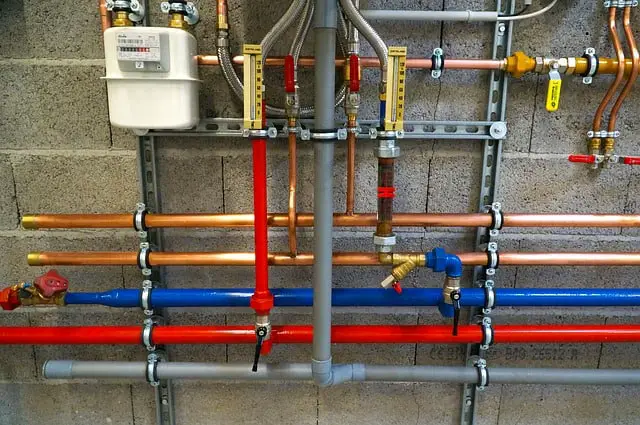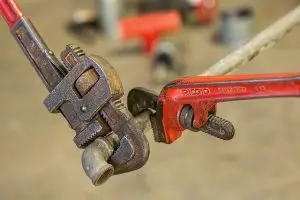When should the plumbing be replaced? ■ Which piping should you put? ■ Pipe laying methods ■ pipe replacement-tips and recommendations ■ after pipe replacement ■ pipe replacement price
She lies there, under the floors or behind the wall and as long as she does not cause trouble – we tend to forget about her existence. Plumbing is one of the important systems in the house and has a direct impact on the quality of our life. Rust-filled plumbing will damage the quality of the water, plus lower the value of the apartment. Pipe replacement is although a complex procedure, but for the long term it certainly pays off. Renovating? Moving? It’s time to replace plumbing.
When should the plumbing be replaced?
There are three main cases in which it is worth replacing the plumbing:
- The common case in which it is worth replacing plumbing is before moving to an apartment. If you purchased a second-hand apartment (congratulations!), Relatively old, it is worth replacing the plumbing before entering the House. In the new apartments, the common use is in plastic pipes, but in the old apartments the pipes are most often made of metal that accumulates rust frequently, and these tend to crack more easily and cause fluidity. No less important, a rusty pipe secretes rust into the water we drink and drags a host of unwanted health consequences. Therefore, before moving to an old apartment it is worth checking the plumbing, and if it is made of metal replace it.
- If your apartment is old and you are renovating it is a golden opportunity to replace the plumbing even if it is not damaged. As we explained right in the previous section, metal pipes accumulate wear naturally over the years and so if the pipeline is made of metal, especially if it exists over 15 years it is worth replacing it during the renovation. Replacement of plumbing that is not part of the renovation is, how to say, quite a headache, to say the least. To replace the plumbing in the whole house need to break walls and lift all the flooring, so if you are already renovating and in this way do it, it is a pity not to take advantage of the opportunity. If your plumbing is plastic, there is no reason to replace it in case it is not damaged.
- In the event that, not on us, there is a leak from the pipeline, you may need to replace it. In most cases, the plumber will replace only the damaged section of the pipeline. If there is an explosion in the pipeline and when the plumber comes to repair it he sees that the entire pipeline is full of corrosion he may recommend replacing the whole to avoid future explosions.
Which plumbing is worth putting on?
In residential homes, it is worth replacing the plumbing with plastic plumbing. It has a number of advantages:
- A plastic pipe is more flexible than a metal pipe, so even if it moves a little it will not necessarily crack or break. A metal hose is not flexible so any small displacement can cause injury.
- Plastic does not accumulate rust so that the water in the House will be cleaner.
- The installation of a plastic pipe is simpler and faster in comparison with a metal pipe.
In the central and southern regions, it is recommended to install SP plumbing, which is considered particularly strong and durable plumbing. In the area of Jerusalem and the north, however, it is not recommended to install it, because it tends to swell and crack at very low temperatures. In cold regions, it is recommended to install PEX pipes that are also considered to be qualitative and more resistant to temperature extremes.
SP pipe and PEX pipe
Adjusting the diameter of the pipes to the quantity of users-when replacing pipes, it is important to adjust its diameter to the number of users. Users are not the number of tenants living in the house, but the number of water points in the house, so each water point is considered a user. Small points that do not attract a lot of water, like Tammy point 4, are called half-point. A 16 mm diameter pipe is suitable for one water point, a 20 mm diameter pipe is suitable for 3 points and a 25 mm diameter pipe for 9 points. Most houses need a pipe with a diameter of 25 mm.
Methods for laying piping
There are two main methods for laying the plumbing – a wired method and a parallel method.
The wired method uses a water divider (switchboard) so that each water point in the house gets its own hose. Some points will receive two pipes-a pipe for hot water and a pipe for cold water (for example in a bath). The advantage of this method is that if there is a problem in a particular pipe it is possible to disconnect only it and proceed as usual. The disadvantage is that the house is filled with pipes, and the more pipes there are, the more likely one of them will burst.
Laying piping by the wired method
In the parallel method connect the water clock to water points with the help of pipes so that the water passes straight to the taps (and does not pass through the switchboard). The advantage of this method is that it is necessary to use less material, and there are fewer scattered pipes in the House. The downside is that if there is a leak should disconnect the entire house from water.
Pipe laying by the parallel method
Which method is suitable for your home? There is no unequivocal answer. The plumber will decide which method to lay the plumbing according to the manufacturer’s instructions and the route of the House.
After replacing the plumbing
Have you replaced the plumbing at home? Great. Before you return the flooring, there are 3 things that are important for you to do:
- Take the plumbing. You should even shoot a video. The goal is that if there is a problem of fluidity or dampness, the plumber will be able to use the pictures to know where the connections are.
- Make sure the installation performs a water pressure test. The plumber will open the main tap and taps in the house for at least 24 hours and check the pressure in the water clock. A weak water flow will indicate a problem with the laying of the pipeline or its leakage.
- Check the plumbing yourself. Before laying the floors, go through the whole house and make sure that you do not see a crack or suspicious warping in the pipeline. Also make sure that there are no small stones left from the renovation, they can damage the pipe.
Pipe replacement price
Pipe replacement is usually priced according to the number of water points in the House. The price ranges from $300-$2000 to hot and cold water point, and also includes the assembly of sanitary ware. It is important to note that the price refers to the situation in which the house is already in the process of redevelopment, and does not

